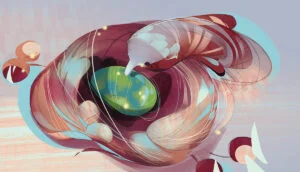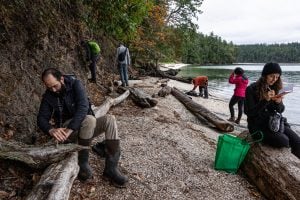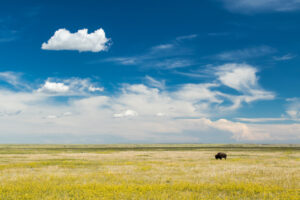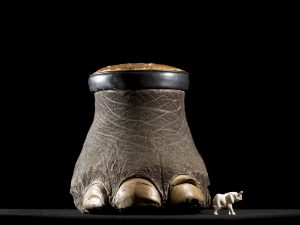
Environment
The sixth extinction
The planet is in the midst of drastic biodiversity loss that some experts think may be the next great species die-off. How did we get here and what can be done about it?
- 4895 words
- 20 minutes
This article is over 5 years old and may contain outdated information.
Wildlife

News that scientists are recommending that the peregrine falcon be delisted as threatened in Canada somewhat overshadowed the status of 43 other species that the Committee on the Status of Endangered Wildlife in Canada (COSEWIC) assessed during its recent semi-annual meeting in Ottawa.
Here’s a quick rundown on five of the species COSEWIC assessed.
Found only in three Vancouver Island lakes, this species of lamprey is one of the four endemic species for which Canada carries full global responsibility. Key anthropogenic threats include: water and land use affecting its habitat, recreation affecting habitat or individual lampreys, and alteration of its prey base.
Unique to Haida Gwaii, this small owl is only about 20 centimetres long, though females of the species are larger than males. The decline and degradation of mature and old-growth forest that comprise the owl’s habitat are the main threats to the bird. It’s also an endemic species for which Canada carries full global responsibility.
This plant grows only on certain limestone cliffs on the Gaspé Peninsula. Another endemic species for which Canada carries full global responsibility, its endangered status is meant to help protect it from development and rock climbers.
Found in Alberta, Saskatchewan and Manitoba, this moth is active only during the day, but is still rare to see. According to COSEWIC, it has been reported in just four localities, with the most recent record being a single specimen collected north of Jenner, Alta., in 2000. Its larvae are known to feed only on the seeds and flowers of the pussytoes plant, the lack of which would adversely affect the insect’s ability to survive. It’s also an endemic species for which Canada carries full global responsibility.
Found in the Northwest Territories and Nunavut, COSEWIC says this population of caribou once numbered about 100,000 before dropping to just a handful of individuals in the 1920s. As of 1996, the herd’s population was estimated to be about 28,000. The herd spends summers on Victoria Island before migrating across sea ice to spend winters on the mainland. This movement over the ice could be affected by climate change and shipping activity.
Are you passionate about Canadian geography?
You can support Canadian Geographic in 3 ways:

Environment
The planet is in the midst of drastic biodiversity loss that some experts think may be the next great species die-off. How did we get here and what can be done about it?

People & Culture
Naming leads to knowing, which leads to understanding. Residents of a small British Columbia island take to the forests and beaches to connect with their nonhuman neighbours

Environment
Environment and Climate Change Minister Steven Guilbeault made big commitments at the international biodiversity conference held in Montreal in December. What does that mean on the ground?

Wildlife
An estimated annual $175-billion business, the illegal trade in wildlife is the world’s fourth-largest criminal enterprise. It stands to radically alter the animal kingdom.